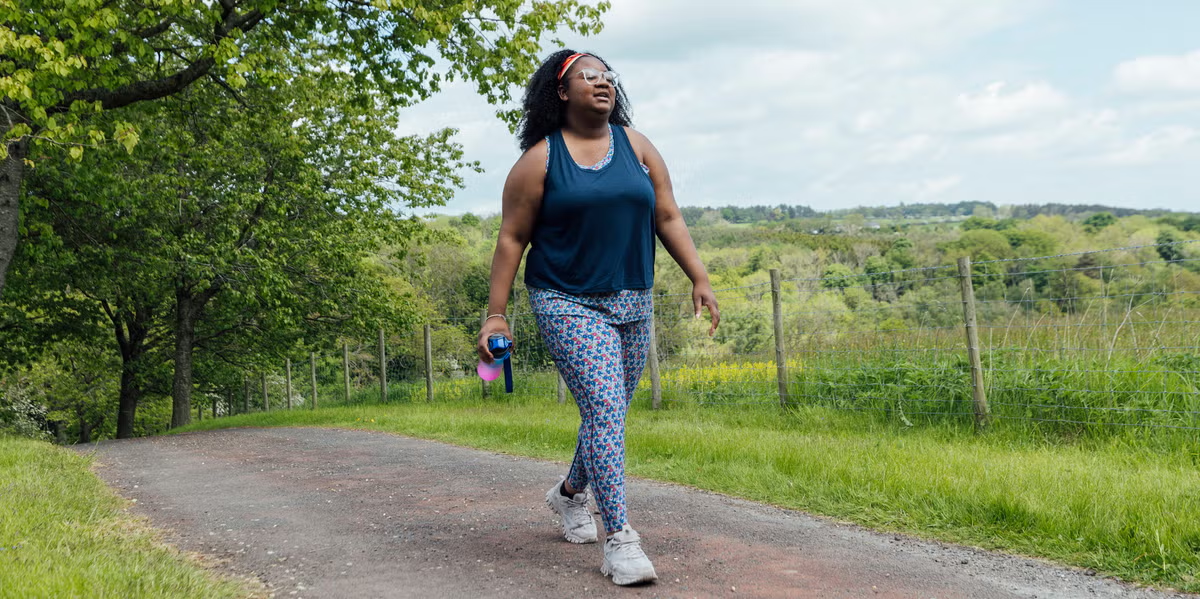Walking is one of the simplest, most accessible forms of exercise, yet its benefits extend far beyond physical health. It’s a practice that nourishes both the body and the mind, helping people find balance in an increasingly stressful and fast-paced world. Unlike high-intensity workouts that may feel intimidating, walking is gentle, sustainable, and adaptable to every lifestyle. Whether it’s a short stroll around the neighborhood, a long hike through nature, or a brisk walk to work, each step contributes to holistic well-being.
Walking For A Healthier Body
When it comes to physical health, walking offers a wide range of advantages. Regular walking improves cardiovascular health by strengthening the heart and reducing blood pressure. It also supports weight management by burning calories and improving metabolism. Additionally, walking helps build muscle endurance, strengthens bones, and lowers the risk of conditions such as type 2 diabetes and stroke.
This daily practice is like selecting the right insta dp for girls—it may seem simple on the surface, but it speaks volumes about how you care for yourself. Just as a profile image conveys identity, walking communicates a lifestyle of self-respect and wellness.

The Mental Health Benefits Of Walking
Beyond its physical impact, walking has powerful mental health benefits. It reduces stress by lowering cortisol levels and boosts mood by encouraging the release of endorphins. Walking outdoors, especially in green spaces, enhances feelings of calm and connection, acting as a natural antidote to anxiety and depression.
For professionals navigating demanding careers, balance is essential. Resources like a law firm listing Australia help individuals find solutions to complex problems, while walking provides clarity and mental strength to approach those challenges with confidence. This combination of external guidance and personal wellness practices fosters resilience.
Walking As An Emotional Release
Walking also creates space for reflection and emotional processing. When the mind feels heavy with thoughts, even a short walk can lighten the load. Pairing walking with music, podcasts, or silence allows individuals to manage emotions in their own way.
This is similar to the emotions expressed in bewafa shayari, where words provide an outlet for heartbreak or longing. Walking, too, offers an outlet—an opportunity to transform emotional energy into movement, clarity, and healing.

Walking For Creativity And Focus
Many great thinkers, from philosophers to entrepreneurs, have used walking as a tool to enhance creativity. The rhythm of walking stimulates brain function, encouraging new ideas and insights. It clears mental clutter, making space for innovative solutions and sharper focus.
Businesses often seek fresh perspectives and problem-solving strategies, turning to experts such as a digital marketing company to revitalize their brand presence. Similarly, walking can help individuals revitalize their thought processes, sparking creativity in both personal and professional life.
Walking As A Community Activity
Walking isn’t only a solitary practice; it can also foster connection. Group walks, charity events, and community fitness initiatives encourage social engagement. These shared activities strengthen bonds, create accountability, and make exercise enjoyable.
In a way, joining such groups resembles using a tradie website directory, where people connect with reliable local professionals. Just as directories bring communities together to share skills and services, group walking brings people together to share time, support, and well-being.
Practical Tips For Building A Walking Habit
- Start Small: Begin with 10–15 minutes a day and gradually increase duration.
- Set Goals: Use step counters or apps to track progress and celebrate milestones.
- Make It Fun: Add variety by changing routes, listening to music, or walking with friends.
- Use Walking Breaks: Take short walks during work breaks to refresh your mind.
- Prioritize Consistency: Walking daily, even briefly, is more beneficial than occasional long walks.
Walking In Nature Vs. Urban Spaces
While walking anywhere is beneficial, the environment enhances the experience. Walking in nature reduces stress more effectively and increases mindfulness by engaging all senses. Trails, beaches, and parks offer soothing scenery that supports relaxation. Urban walks, however, can be equally rewarding when paired with intentional awareness. Observing architecture, people, and city rhythms provides stimulation and grounding in the present moment.
Both environments offer unique opportunities for well-being, and alternating between them ensures a balanced walking practice.
Conclusion
Walking is far more than a way to move from one place to another—it’s a powerful practice that supports both physical health and mental clarity. It strengthens the body, reduces stress, and provides emotional release while fostering creativity and connection. Whether done alone for reflection or in groups for community, walking is a habit that adapts to every lifestyle. Like a carefully chosen profile picture, a trusted professional directory, or a meaningful poem, walking reflects care for oneself and a commitment to growth. In every step, it offers a reminder that well-being doesn’t require complexity—just consistency. By making walking a daily ritual, you invest in both your physical vitality and your mental peace, one step at a time.







